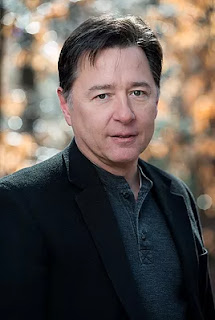 |
| Daren Wang, photo by Tom Meyer |
Daren Wang is the author of the novel The Hidden Light of Northern Fires, which takes place in upstate New York in the 19th century. His work has appeared in a variety of publications, including Paste Magazine and Five Points Magazine. He is the founding executive director of AJC Decatur Book Festival, and he lives in Georgia.
Q:
How did you come up with the idea for The Hidden Light of Northern Fires?
A:
The short answer is, I lived there. The barn Mary Willis used as an Underground
Railroad stop is the house I grew up in. I had some idea of the story when I
was growing up, but I didn’t know Mary Willis’s name.
We
were told the house had been part of the Underground Railroad. We also owned
the barn, and we rented out the house. If you went into the cellar of the
house, the hidey-hole in the book is dug into the wall of the cellar.
I
joke that in the South, if your house is older than 150 years, Grandma’s silver
is buried behind it. If your house is over 150 years old in Western New York,
it was part of the Underground Railroad. Both are mostly urban legend.
In
the case of Mary Willis, I found an oral history of the Willis family online,
and it inspired me. I realized the story was true, in terms of the Underground
Railroad and secession [Town Line, the town the Willises lived in, seceded from
the Union during the Civil War].
Q:
How much research did you need to do to write the novel, and did you learn
anything that especially surprised you?
A:
I spent about three years researching, not knowing I was going to write a book.
But if you find that the place you grew up in has this unique history, that
it’s not just an urban legend, you’re definitely in. It became an obsession for
me.
So
much of the research I found would show up as little snippets in the book. You
don’t want to bog down the story. If there’s a story that shows off the
research, as a reader I find that tedious. I would dribble something in here or
there. It would be just texture.
Some
of the more fascinating things—I live in Atlanta, and would go up to Buffalo
fairly often. I went to see the desk where the secession order for Town Line
was signed.
As
I was walking into the museum, there were glass cases [labeled] The Willis
Collection. They were full of Indian artifacts, five- or six-thousand-year-old
artifacts. I asked where these came from and was told, From your back yard.
They were donated in the 1950s by the Willis family.
That
property had been continuously occupied back to the time of the pyramids! It’s
a progression of items, right into the 19th century. I had no idea
that was the history of this place.
The
thing that really drove home the sense that I had to write this was when I went
to Batavia, New York, to the museum there, which has records from when the area
was the frontier.
Hanging
on the wall was the Lincoln funeral train schedule, [which included Town Line]
and ran through Nathan Willis’s property. Abraham Lincoln’s funeral train ran
through the property I grew up on. It was the same path as the inaugural train.
The history of the property is so fascinating, and somebody had to [write about
it]!
Q:
How did you balance the history with the story you were writing in the novel?
A:
For me, it had a clear delineation. I wrote the first draft, which was 80,000
words. The historic Mary Willis has 17 siblings, so I gave Mary Willis her 17
siblings in the first draft. That’s a really terrible novel. As I was going
through, I realized she should just have one, so I eliminated the other 16.
That was the moment I realized you don’t have to keep everything.
The
weirder stuff has to be true. A town secedes from the Union, near the Canadian
border—you better have something to back that up. Or Confederate agents
wreaking havoc on the Canadian border—you better have a basis for that. Affairs
of the heart, you can play with.
Q:
How was the novel’s title chosen, and what does it signify for you?
A:
Part of it has something of a biblical reference. The attitude that you
shouldn’t hide your light under a bushel. Of course, if you’re operating on the
Underground Railroad, you have to keep your light under a bushel. This woman’s
life was lost to history, which was partly as a result of that. The stories had
to be kept quiet.
When
you think about how the Underground Railroad operated, I imagined signal fires
leading refugees northward--but there weren’t. But I wanted that imagery in
there as well.
Q:
What are you working on now?
A:
I’m playing with a book, a story around the Erie Canal. It’s set a decade or so
before Hidden Light. It involves a character named Edward Rulloff, who was a
fascinating guy—an autodidactic genius who spoke 17 languages but was a serial
killer. The book is like Heart of Darkness of the Erie Canal, in the 19th
century.
--Interview with Deborah Kalb

No comments:
Post a Comment